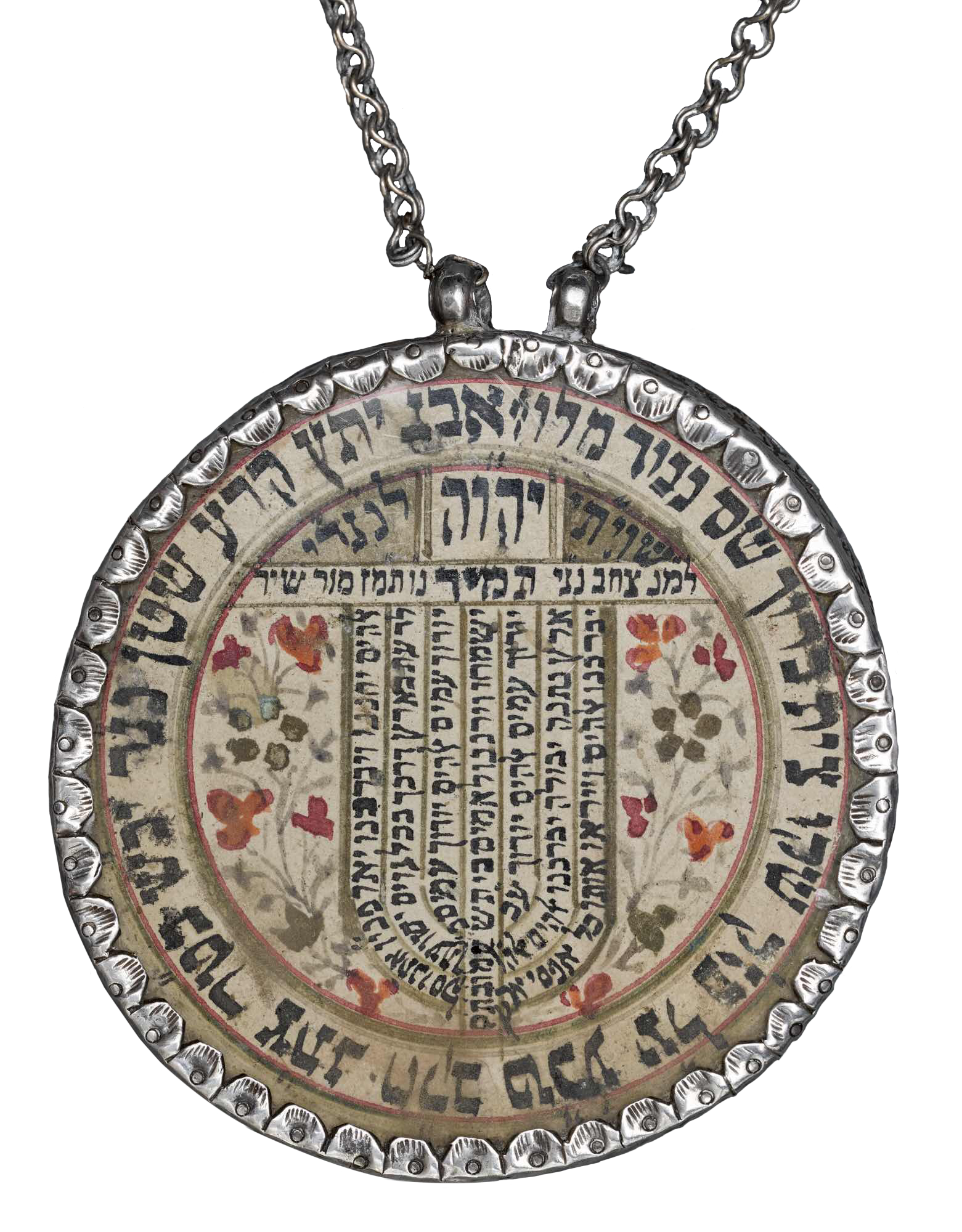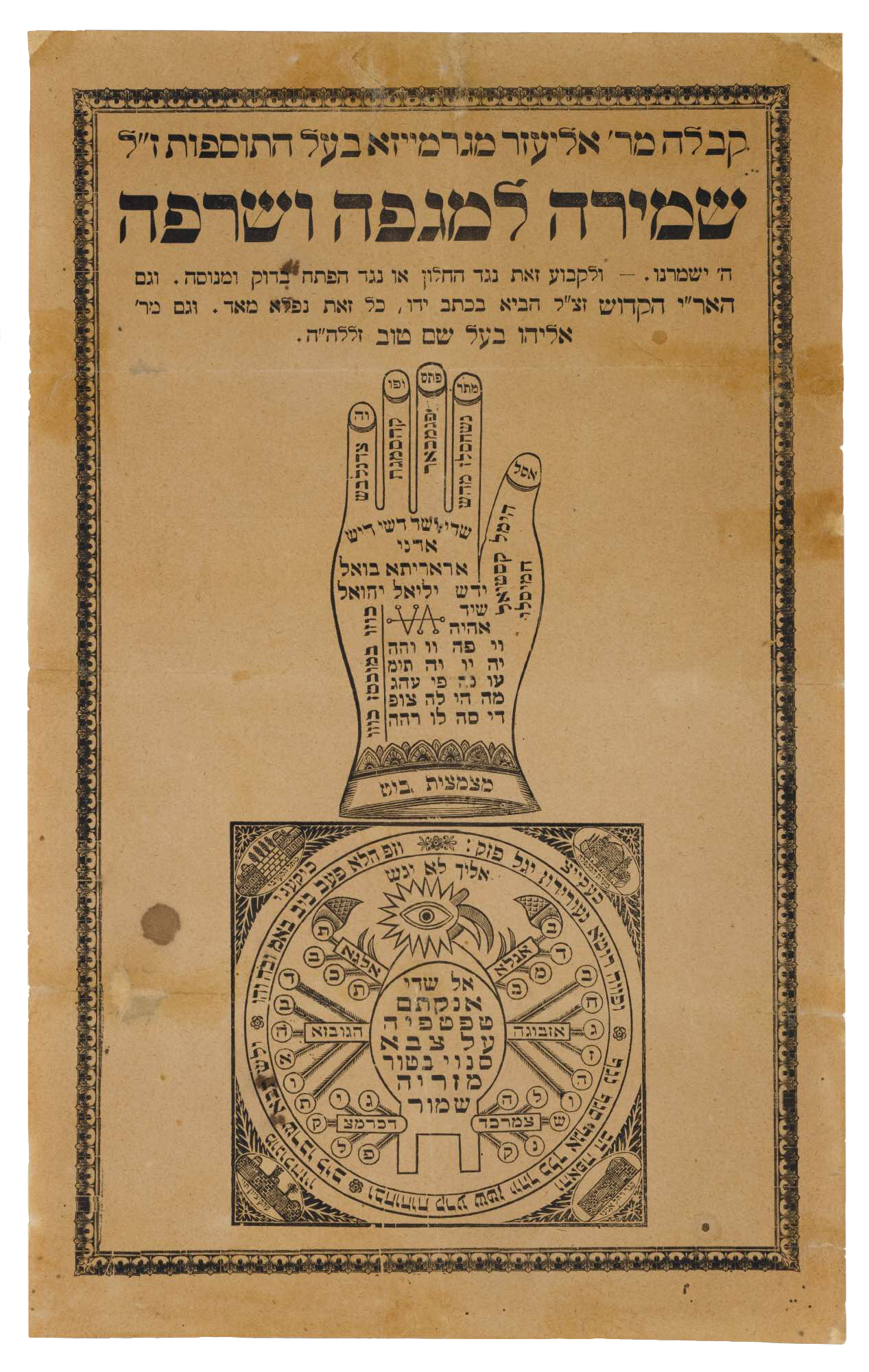
An object made of paper, parchment, metal or other material created for protective purposes.





There are various types of amulets: birth amulets for a newborn baby and the mother; wall plaques, and metallic amuletic plaques. In Rome and Jerusalem, some shopkeepers have “bolletini,” amulets that are supposed to bring prosperity.
Uri Shapira shows a collection of amulets and tells their stories.
Bohak, Gideon and Anne Hélène Hoog. Magie : Anges et démons dans la tradition juive. Paris: Musée d’art et d’histoire du Judaïsme, 2015.
Dautović, Vuk. “Unknown Collection of Amulets from Belgrade.” El Prezente: Studies in Sephardic Culture: Magic and Folk Medicine, edited by Tamar Alexander et al., vol. 5, Be’er-Sheva: Moshe David Gaon Center for Ladino Culture, Ben-Gurion University of the Negev, 2011, pp. 161-86.
Davis, Eli, and David A. Frenkel. Ha-ḳameʻa Ha-ʻivri: Miḳraʼi-refuʼi-kelali: ʻim Tatslumim Ṿe-Iyurim Rabim [The Hebrew Amulet: Biblical-Medical-General]. Jerusalem: The Institute for Jewish Studies, 1995.
Magic & Superstition in the Jewish Tradition. Chicago: Spertus College of Judaica Press, 1975.
Schrire, Theodore. Hebrew Amulets: Their Decipherment and Interpretation. New York: Routledge & K. Paul, 1966.
Vukosavović, Filip, ed. Angels and Demons: Jewish Magic through the Ages. Jerusalem: Bible Lands Museum, 2010.
Wiesel, Yael and Sarah Shahak. Lots of Luck – Jewish Amulets and Ritual Objects. Ashdod: Corinne Mamane Museum of Philistine Culture, 2013.
Select a language